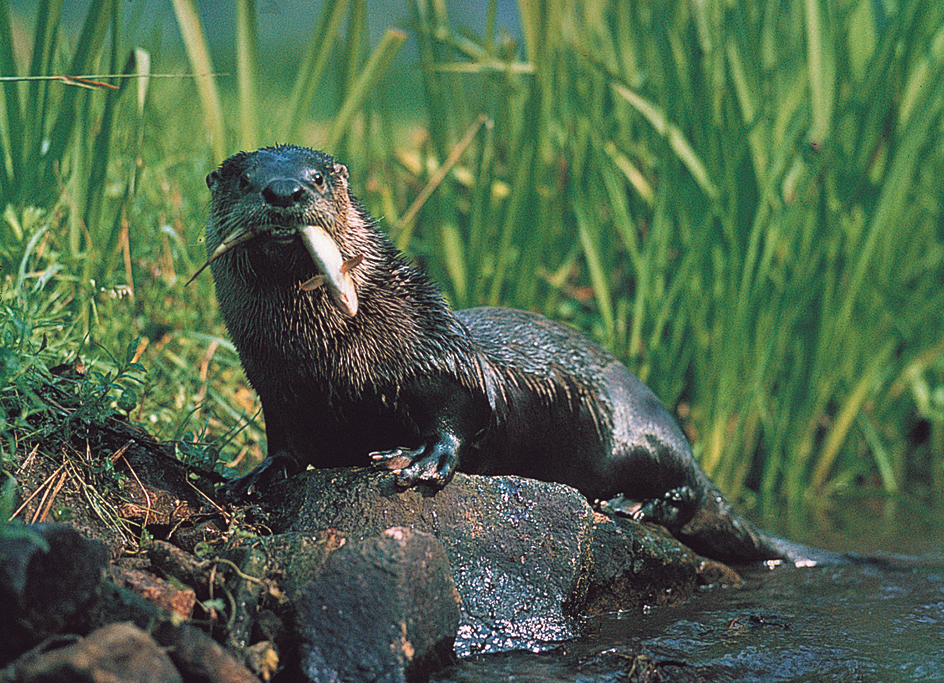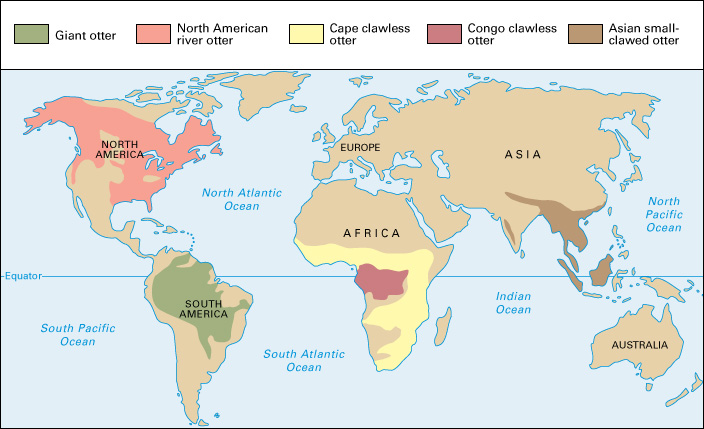Otter is the name for any number furry animals that spend much of their time in the water. Otters are expert swimmers and divers and can stay underwater for three or four minutes. The animals move awkwardly on land.
Otters live on all the continents except Australia and Antarctica. Most weigh from 10 to 30 pounds (4.5 to 14 kilograms) and grow from 3 to 41/2 feet (0.9 to 1.4 meters) long, including the tail. The giant otter of South America may measure up to 7 feet (2 meters) long. Otters live along rivers, streams, lakes, and coastal waters, or in marshes. This article discusses otters that inhabit fresh waters. For information about sea otters, which live in the Pacific Ocean, see the article on Sea otter .

Body.
An otter has a small flattened head; a long, thick neck; and a thick, pointed tail. Special muscles enable the animal to close its ears and nostrils tightly to keep water out. Elastic webbing grows between the otter’s toes. In most species (kinds) of otters, the webbing is extensive enough to help the animals swim swiftly.
Loading the player...Otters
Otters, like beavers and muskrats, have long coarse guard hairs that cover and protect the short, thick underfur. This underfur traps air and keeps the otter’s skin dry. In some species, a layer of fat under the skin insulates the otter from the cold. An otter’s fur varies in color from brownish-gray to dark brown when dry, and appears darker when wet.
Otters often use their paws to handle objects. They hold and play skillfully with such things as stones and small shellfish. Some African and Asian otters that have only a little webbing between their toes can use the toes like fingers. Such clawless and small-clawed otters handle food in much the same way as raccoons. These otters feed on shellfish that live in shallow water. All otters have claws. Even the so-called clawless otter has short claws on the three middle toes of its hind feet.

The life of an otter.
Otters eat crayfish, crabs, and fish. Although otters can sometimes catch such swift-swimming fish as trout, they generally capture slower fish. They also eat clams, frogs, insects, snails, snakes, and occasionally waterfowl. Otters remain active the year around. Where people hunt them, they move about more at night than during the day. The animals hunt mostly alone, but sometimes they hunt in family groups.
Otters spend much time playing. They wrestle and play and slide down steep muddy slopes in summer and down icy riverbanks in winter. Otters use a variety of sounds to communicate among themselves. All species have a warning growl. In addition, otters use various kinds of chirps, chuckles, screams, and squeals as forms of communication.
Most otters make their homes in burrows in riverbanks or under rocky ledges, or in abandoned dens of other animals. Most female otters give birth to two or three young at a time. The babies, called cubs or pups, are born blind. The young do not swim until they are several months old. People hunt otters for their valuable and beautiful fur. Certain species, especially the giant otter, are in danger of becoming extinct.
